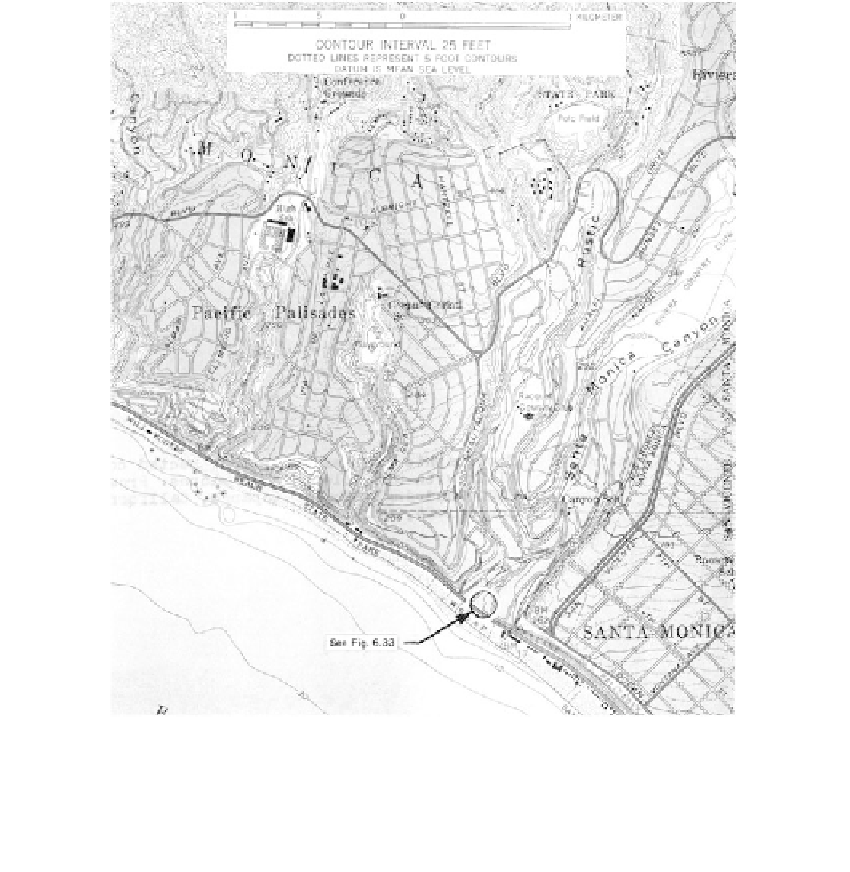Environmental Engineering Reference
In-Depth Information
FIGURE 7.55
Topographic expression of a dissected coastal plain with unstable natural slopes. (From USGS quadrangle
sheet, Topanga, California; scale 1:24,000. For a structural coastline, see
Figur
e 7.43
c.) (Courtesy of USGS.)
phases have been identified: a predominantly clayey phase, and a hard and partially
cemented sandy phase. The clayey stratum, of major importance in slope stability, lacks
the thin-bedded character of the Modelo and actually has been so badly distorted that it is
marbled with sworls and pockets of sand. The parent materials weather to lighter and
brighter-colored soils of lower SPT values and high water content; identification proper-
ties are given in
Table 7.9
and strength values in
Table 3.38.
London Clays
The famous clays underlying the city of London were deposited under marine conditions
during the Eocene (Skempton and Henkel, 1957). Uplift and erosion removed from one
third to two thirds of the original thickness, and overconsolidation by maximum past pres-
sure has been about 20 tsf. A geologic map of the central part of the city is given in
Figure
7.56a,
and a typical section in Figure 7.56b. The clay thickness is as thick as 200 ft. Boring
logs, including index properties, and strength and compressibility characteristics from
two locations, are given in
Figure 7.57.
It is interesting to compare these clays with those
from the Thames estuary (
Figure 7.41)
.


